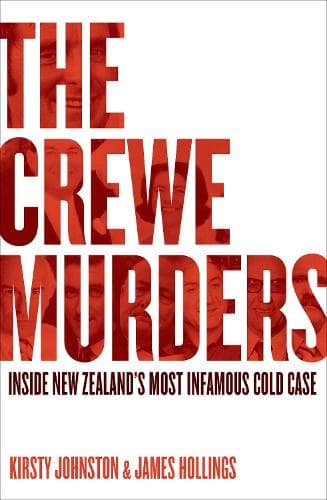Review: The Crewe Murders: Inside New Zealand’s Most Infamous Cold Case
Reviewed by Greg Fleming
The 1970 murder of young couple Harvey and Jeannette Crew on their Pukekawa farm has fascinated the nation for decades. Arthur Allan Thomas was convicted of the crimes in 1973 (a 1971 trial which also resulted in a conviction was overturned on appeal.) Thomas was later pardoned after serving nine years in prison - mainly due to the efforts of the late journalist Pat Booth.
The case has spawned many books as well as a feature film, Beyond Reasonable Doubt, in 1980; rock band Blam Blam Blam even wrote a song about it. Many may ask, ‘is there anything else left to say after all this time?’ Massey journalism professor James Hollings and renowned journalist Kirsty Johnston believe there is. They say they were drawn to the story because this was more than just a cold case and had ‘its roots deep in the subsoil of New Zealand society, in the latent class divisions of farm and city, of sheep farmer versus dairy farmer, landowner and leaseholder.’
Another key difference to other books on the case is that Johnston and Hollings went into the project without a specific suspect in mind. They set out to write ‘a history not a whodunnit’ of a case which has the distinction of being the only time the New Zealand government has bypassed the courts to set a convicted murderer free.
The opening chapter, for example, delves into the turbulent history of the Waikato and the fact that the Crewe’s farm was on land confiscated as a punishment by the government after a Māori rebellion (Pukekawa is sometimes translated as ‘the hill of bitter memories’). Indeed, the authors discover that the area played host to two previous contentious murders in the 1920s and 30s.
The murders of Harvey and Jeannette were also presaged by some disturbing incidents - relayed here in detail. The Crewe’s home was broken into and some of Jeannette’s jewelry stolen. The offender was never caught and only the most valuable jewelry was taken, leading Jeannette to suspect that the person responsible had known what she had owned. Jeanette became anxious about being at home alone and often accompanied her husband as he worked on the farm. Then - just six days after Jeannette gave birth to Rochelle - there was a fire in the room the couple had prepared for the baby. The mysterious incidents culminated in the couple’s hay barn burning down.
A little over a year later Len Demler - Jeannette’s father and an early suspect - says he discovered a blood-strewn crime scene at the couple’s home, with baby Rochelle in her cot and no sign of her parents. Police suspicion soon shifted from Demler - although many commentators still suspect he was involved in some way. One theory, argued by Pat Booth, was that this was a murder/suicide with Jeannette killing herself sometime after shooting Harvey in a domestic dispute and that Demler covered up the crime. But police, under increasing pressure to secure a conviction, soon began looking at a one-time admirer of Jeannette, Arthur Allan Thomas, as a suspect.
The authors take the reader through a step-by-step recounting of both trials and his pardon in December 1979. A Royal Commission of Inquiry the next year saw the Thomas legal team win a resounding victory over the Police, but it was not until a 2014 review - undertaken at the behest of Rochelle Crewe - that Police admitted that it was highly likely that a key piece of evidence, a cartridge case, was planted at the scene by police. A finding the authors describe as ‘the most famous miscarriage of justice case in New Zealand history.’ Seen from today’s perspective the case foreshadows the David Bain and Teina Pora cases - where lax practices and a rush to judgment also led to wrongful convictions and years in prison.
In an interview published to promote the book, Johnston says she was especially moved by the story of Jeannette, who was just 30 when she died. Perhaps for the first time, Harvey and Jeannette are seen here not just as victims, but as people.
The result is a brilliantly researched and compelling look at one of our most significant unsolved cases, one that also gives readers a fascinating peek into our cultural and legal history. It also includes revealing new interviews. Among them one with Jim McLay - the then attorney general who recommended Thomas be pardoned and the welder who had worked on the infamous axle, which was found in the Waikato River with Harvey Crewe’s body three months after the murder.
The authors admit they don’t have an answer as to who committed the murders: “We hope, however, that we have shed light on who did not do it.”
Reviewed by Greg Fleming
